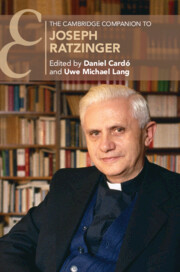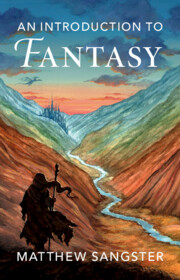123 results
33 - Queer Southern Literature and the Dirty South
- from Space and the Regional Imaginary of Queer Literature
-
-
- Book:
- The Cambridge History of Queer American Literature
- Published online:
- 17 May 2024
- Print publication:
- 06 June 2024, pp 613-627
-
- Chapter
- Export citation
5 - Varieties of Gacaca; or: The Invention of Tradition
- from Part IV - The Evolution of Lawfare
-
- Book:
- The Violence of Law
- Published online:
- 30 April 2024
- Print publication:
- 02 May 2024, pp 195-246
-
- Chapter
- Export citation
Introduction - The Paradox of Homeric Creativity
-
- Book:
- Homer's Living Language
- Published online:
- 11 April 2024
- Print publication:
- 18 April 2024, pp 1-4
-
- Chapter
- Export citation
Conclusion
-
- Book:
- Who Is a True Christian?
- Published online:
- 04 January 2024
- Print publication:
- 22 February 2024, pp 271-292
-
- Chapter
- Export citation
Chapter 3 - Irish Rebellion on the Sensational Stage
-
-
- Book:
- Nineteenth-Century Literature in Transition: The 1860s
- Published online:
- 01 February 2024
- Print publication:
- 08 February 2024, pp 57-74
-
- Chapter
- Export citation
Creating Earthquakes
-
- Journal:
- New Theatre Quarterly / Volume 40 / Issue 1 / February 2024
- Published online by Cambridge University Press:
- 13 February 2024, pp. 1-30
- Print publication:
- February 2024
-
- Article
- Export citation
2 - Interpretations and Fields of Application
- from Part I - The Colours of Power
-
- Book:
- Power and Inequality
- Published online:
- 04 January 2024
- Print publication:
- 18 January 2024, pp 11-26
-
- Chapter
-
- You have access
- HTML
- Export citation
“And I Believe in Signs”: Soviet Secularity and Islamic Tradition in Kyrgyzstan
-
- Journal:
- Comparative Studies in Society and History / Volume 66 / Issue 2 / April 2024
- Published online by Cambridge University Press:
- 11 January 2024, pp. 342-368
-
- Article
-
- You have access
- Open access
- HTML
- Export citation

The Cambridge Companion to Joseph Ratzinger
-
- Published online:
- 25 January 2024
- Print publication:
- 21 December 2023
Chapter 5 - Moral Hazards
-
- Book:
- Risk in the Roman World
- Published online:
- 16 November 2023
- Print publication:
- 30 November 2023, pp 111-124
-
- Chapter
- Export citation
3 - Jazz as Intertextual Expression
- from Part I - Elements of Sound and Style
-
-
- Book:
- Jazz and American Culture
- Published online:
- 09 November 2023
- Print publication:
- 30 November 2023, pp 49-63
-
- Chapter
- Export citation
On Political Tradition and Ideology: Russian Dimensions of Practical Zionism and Israeli Politics
-
- Journal:
- Nationalities Papers , FirstView
- Published online by Cambridge University Press:
- 23 November 2023, pp. 1-18
-
- Article
-
- You have access
- Open access
- HTML
- Export citation
6 - Ethical Environmentalism II
- from Part II - Critical Legal Moralism
-
- Book:
- Enforcing Morality
- Published online:
- 03 November 2023
- Print publication:
- 16 November 2023, pp 111-130
-
- Chapter
- Export citation
Chapter 11 - Church Ceremonies, the Authority of the Church and the Authority of Scripture
- from Holy Places
-
- Book:
- On Laudianism
- Published online:
- 05 October 2023
- Print publication:
- 19 October 2023, pp 151-162
-
- Chapter
- Export citation
8 - Causation in the Chinese Civil Code
-
-
- Book:
- The Making of the Chinese Civil Code
- Published online:
- 31 August 2023
- Print publication:
- 14 September 2023, pp 179-196
-
- Chapter
- Export citation

An Introduction to Fantasy
-
- Published online:
- 07 October 2023
- Print publication:
- 07 September 2023
Envoi
-
- Book:
- An Introduction to Fantasy
- Published online:
- 07 October 2023
- Print publication:
- 07 September 2023, pp 432-436
-
- Chapter
- Export citation
Haddis Alemayehu’s Vision of the Old World: Literary Realism and the Tragedy of History in the Amharic Novel Fikir iske Mekabir
-
- Journal:
- Cambridge Journal of Postcolonial Literary Inquiry / Volume 10 / Issue 3 / September 2023
- Published online by Cambridge University Press:
- 01 September 2023, pp. 353-376
-
- Article
-
- You have access
- Open access
- HTML
- Export citation
Fashioning the “Inner” (Bāṭin) in Baḥya ibn Paqūda’s Duties of the Hearts
-
- Journal:
- Harvard Theological Review / Volume 116 / Issue 4 / October 2023
- Published online by Cambridge University Press:
- 14 August 2023, pp. 552-574
- Print publication:
- October 2023
-
- Article
-
- You have access
- Open access
- HTML
- Export citation
26 - Modernism, Personality, and the Racialized State
- from Part III - Situating US Modernism
-
-
- Book:
- The Cambridge History of American Modernism
- Published online:
- 13 July 2023
- Print publication:
- 20 July 2023, pp 450-464
-
- Chapter
- Export citation



